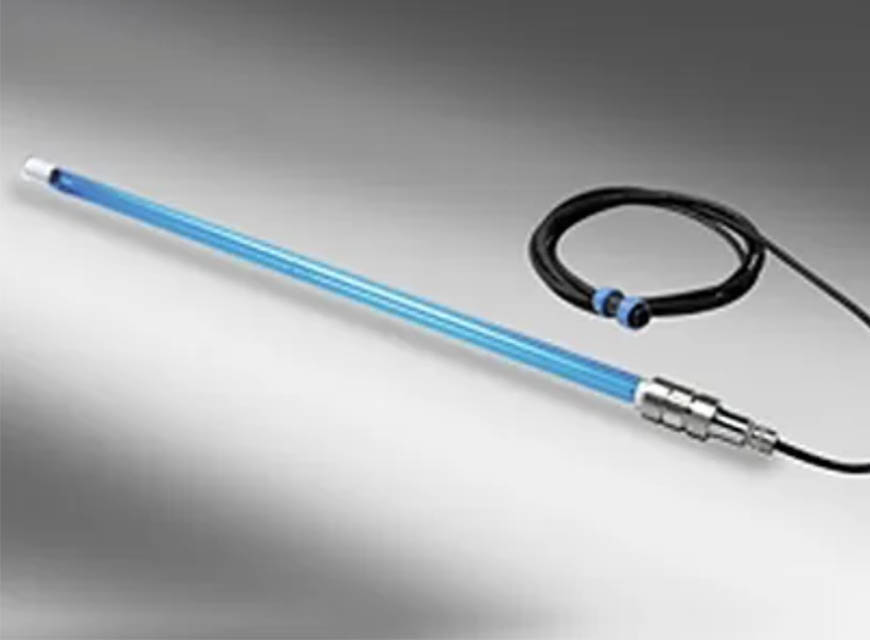
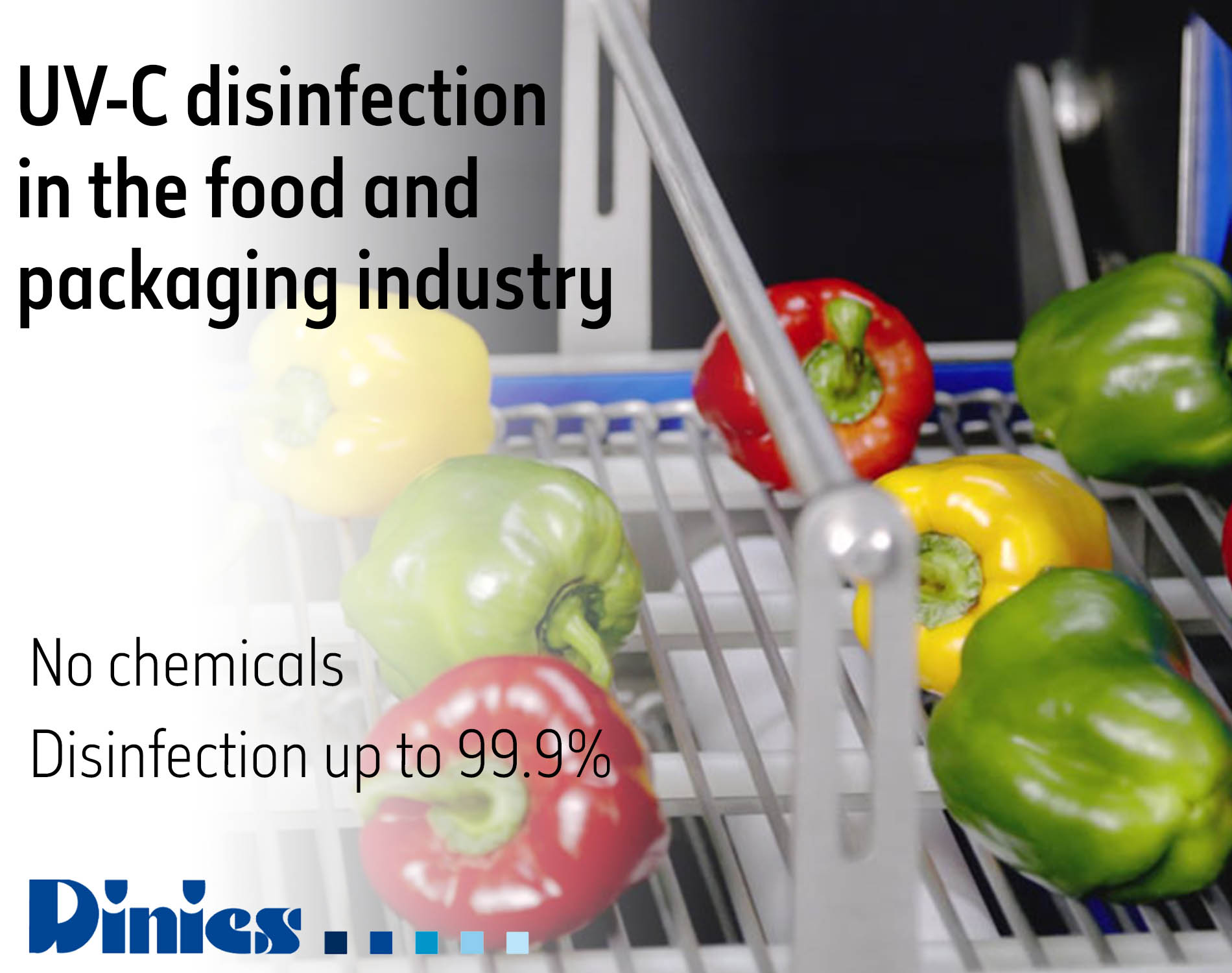

Humidity and health: creating the right balance with the right indoor climate
The Covid-19 pandemic clearly shows how viruses are transmitted from person to person via the ambient air – invisibly and quickly. Aerosols represent a major and serious hazard, especially in areas with high levels of public traffic. Pathogens such as SARS-CoV-2 spread through the room air and increase the risk of cross-contamination. This problem has not only existed since the corona pandemic, the same applies to flu viruses, bacteria and microorganisms that are in the ambient air and regularly transmit diseases.
The aim of UV air disinfection is to remove aerosols, viruses and microorganisms in the ambient air, so that the germ content in the air is reduced and the risk of infection and cross-contamination is reduced.
Protect yourself and your employees, customers and guests with the UV air purifiers of the Dinies UVG series.
UV Tunnel
The task of this stainless steel UV tunnel is to free food and packaging from germs. The products running through are irradiated from all sides with the built-in UVC lamps in order to maintain optimal production conditions in the high-care area.
The UV disinfection tunnel illuminates the passing products all around with UV radiation, whereby a whole-area UV disinfection is achieved. The powerful UV lamps are attached above, below and on the sides, depending on the product and the production speed.
The most common application of the UV tunnel is in front of a clean room. By using a UV tunnel as a disinfection sluice, products, packaging and equipment are infiltrated into the clean room in a UV disinfected state, with very high disinfection rates depending on the length of time in the UV radiation. UV disinfection sluices are used in many industrial areas such as the food industry, but also in the pharmaceutical industry or medical technology.
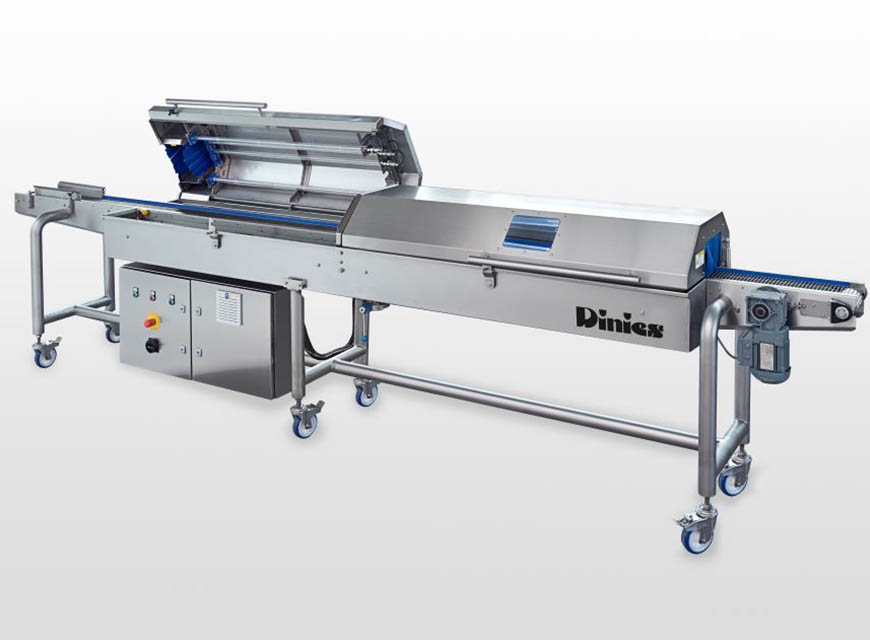
UV Mobile
In everyday hospital operations, however, doctors and hygiene specialists fight against completely different dangerous hospital germs such as the bacterium Staphylococcus aureus, which is also known as methicillin-resistant Staphylococcus aureus (MRSA) due to its resistance to common antibiotics. Other dangerous hospital germs are enterobacteria, enterococci and the bacterium Pseudomonas aeruginosa.
With the UV-Mobil there is for the first time a very flexible UV / ozone solution to deal with this problem. The device can be equipped with normal UV-C lamps as well as ozone lamps.
The room air and the illuminated surfaces are directly sterilized by the UV-C radiation and a germ reduction of up to 3 log levels has been proven. The dangerous hospital germs Staphylococcus aureus, enterobacteria, enterococci, etc. can be sterilized up to 99.9% with UVC light and that in a very short time and with little effort.

UVG Air Purifier
The Covid-19 pandemic clearly shows how viruses are transmitted from person to person via the ambient air – invisibly and quickly. Aerosols represent a major and serious hazard, especially in areas with high levels of public traffic. Pathogens such as SARS-CoV-2 spread through the room air and increase the risk of cross-contamination. This problem has not only existed since the corona pandemic, the same applies to flu viruses, bacteria and microorganisms that are in the ambient air and regularly transmit diseases.
The aim of UV air disinfection is to remove aerosols, viruses and microorganisms in the ambient air, so that the germ content in the air is reduced and the risk of infection and cross-contamination is reduced.
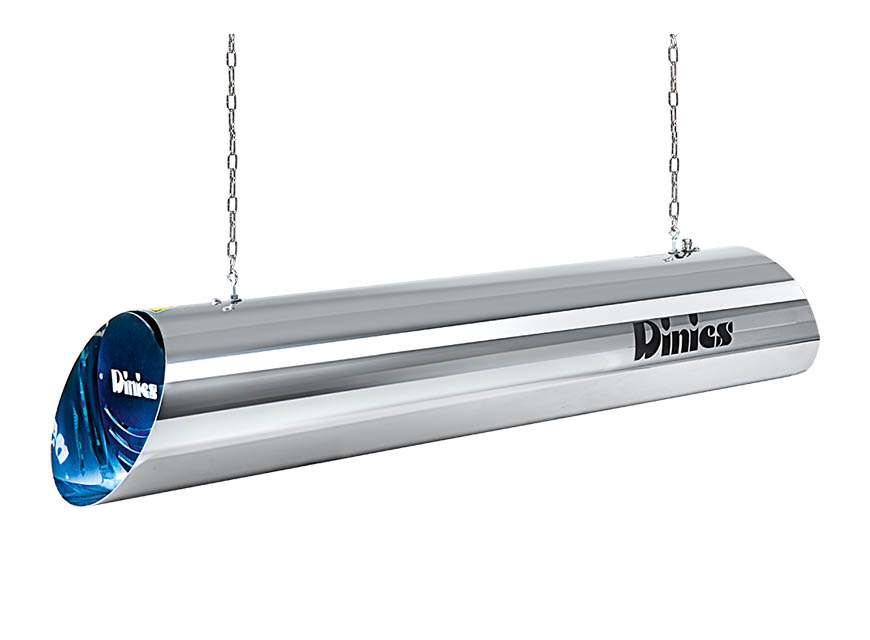
UV Lights
Germ contamination in the air is a treacherous affair: You are exposed to it defenselessly and you can neither see, smell, hear or feel the danger. And yet the germs are always there. But thanks to DINIES UV lights, this is now a thing of the past.
UV lights and their advantages
Killing of various kinds of microorganisms up to 99.99%
Air disinfection without chemical pollution
Improvement of the indoor climate
Disinfection through natural air circulation in the room, therefore no noise
Models with a protective reflector can be operated safely when people are in the room
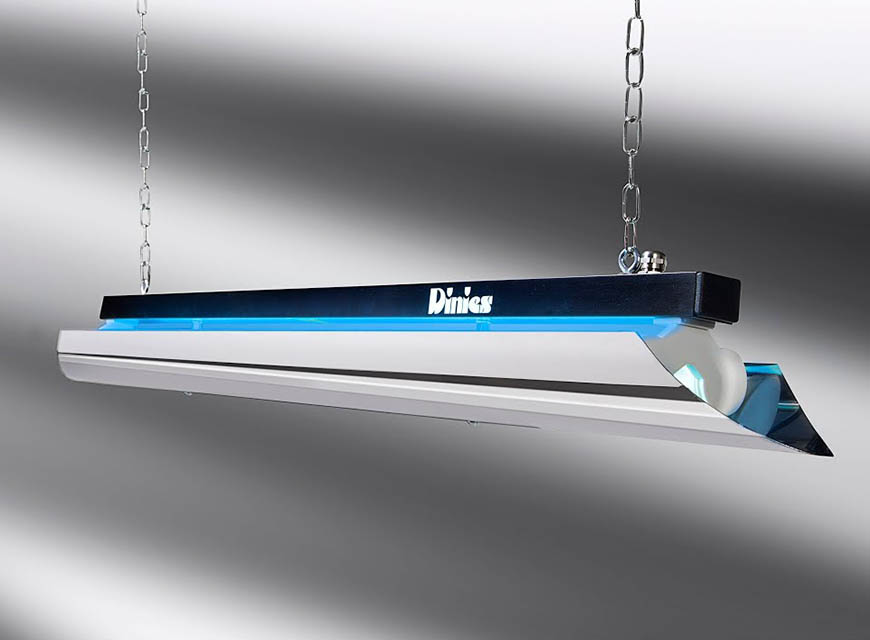
Air Duct Disinfection
Ventilation systems offer optimal living conditions for microorganisms. Due to the branched canal systems, these are also distributed over a large area, which can lead to increased employee absenteeism in times of flu.
Dangerous germs such as MERS or SARS are also transmitted this way. Clinics in Hong Kong had to experience this during the SARS epidemic.
Because of this germ problem in ventilation ducts, Dinies Technologies has developed a ventilation disinfection module that can be easily installed in a duct system.
The plug-and-play UV disinfection units are available in different dimensions, suitable for different air flows.
The built-in monitoring unit continuously checks the air flow and adjusts the lamp output if necessary. The energy consumption can be reduced considerably as a result.
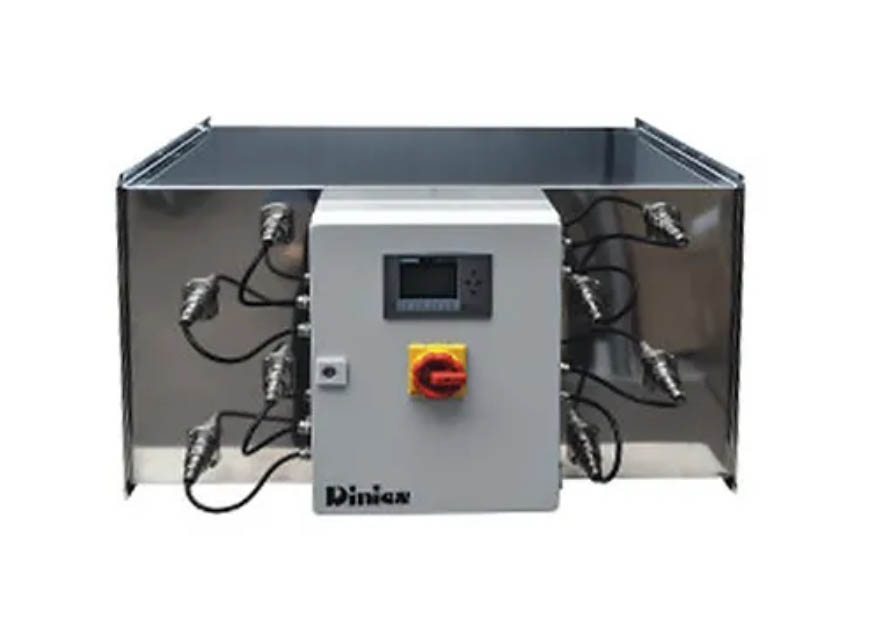
CleanO3 Mat
In everyday hospital operations, however, doctors and hygiene specialists fight against completely different dangerous hospital germs such as the bacterium Staphylococcus aureus , which is also known as methicillin-resistant Staphylococcus aureus (MRSA) due to its resistance to common antibiotics . Other dangerous hospital germs are enterobacteria, enterococci and the bacterium Pseudomonas aeruginosa. But noroviruses are also a constant danger in the sanitary facilities of hospitals.
The room air and the illuminated surfaces are directly sterilized by the UV-C radiation and a germ reduction of up to 3 log levels has been proven. The dangerous hospital germs Staphylococcus aureus, enterobacteria, enterococci, etc. can be sterilized up to 99.9% with UVC light and that in a very short time and with little effort.
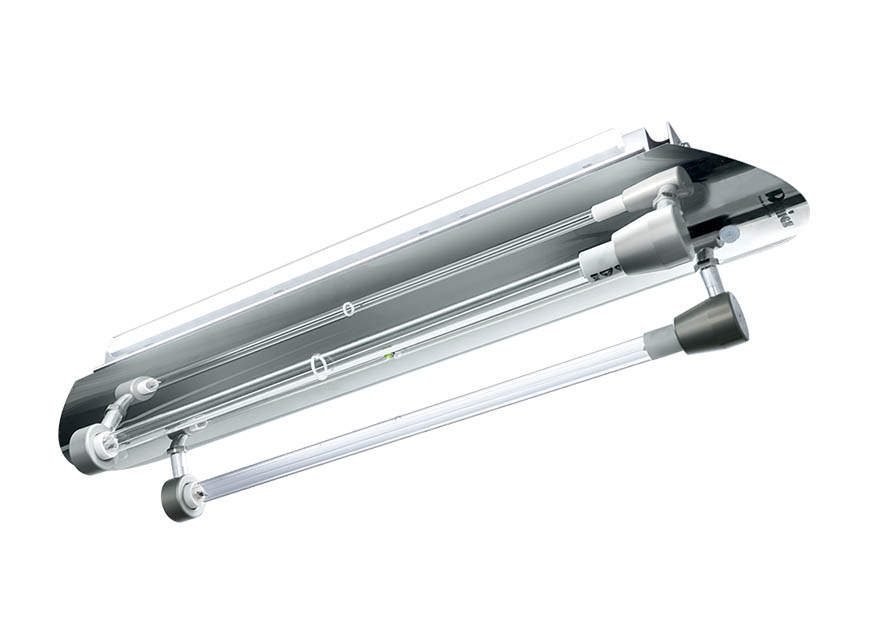
UV Chambers
UV lights and UV lamps are undisputed in terms of their effectiveness. UV-C lamps with a wavelength of 254 nm have the potential to sterilize or illuminate surfaces or the air, but also entire rooms, with UV radiation. UV-A with a wavelength of around 365nm is mainly used in light polymerization.
In the elegant UV chambers made of aluminum, only UV low-pressure lamps are used, which keep both temperature and energy consumption low. The objects to be irradiated can be brought very close to the surfaces of the UV lamps, which enables very effective work.
All UV devices can be equipped with UV lamps of different wavelengths, which means that the possible uses are enormous.
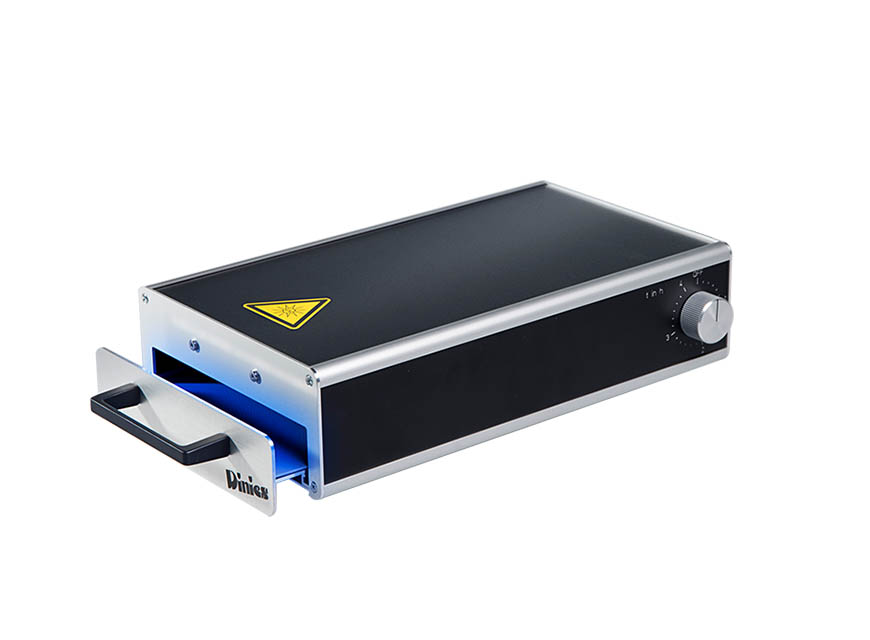
Ozone Device
Destroyed ozone layer! This is how ozone became known from the media.
Ozone is nature’s detergent to keep the atmosphere clean. It is created from oxygen, which has been supplied with energy from UV radiation, lightning, etc.
Ozone is a very aggressive oxidizing agent which, when oxidized, breaks down and eliminates odors, fats, bacteria, spores, viruses, etc. Only oxygen, water, carbon dioxide, nitrogen and other harmless substances remain as residues.
Ozone has a half-life of approx. 40 minutes and is therefore automatically reduced back to oxygen.
All models are equipped with UV-C generating ozone lamps with a service life of approx. 8000 hours. The sturdy housings are made of aluminum. The ozone devices are available as a floor-standing version with a power cord and cord switch or as a wall-mounted device.
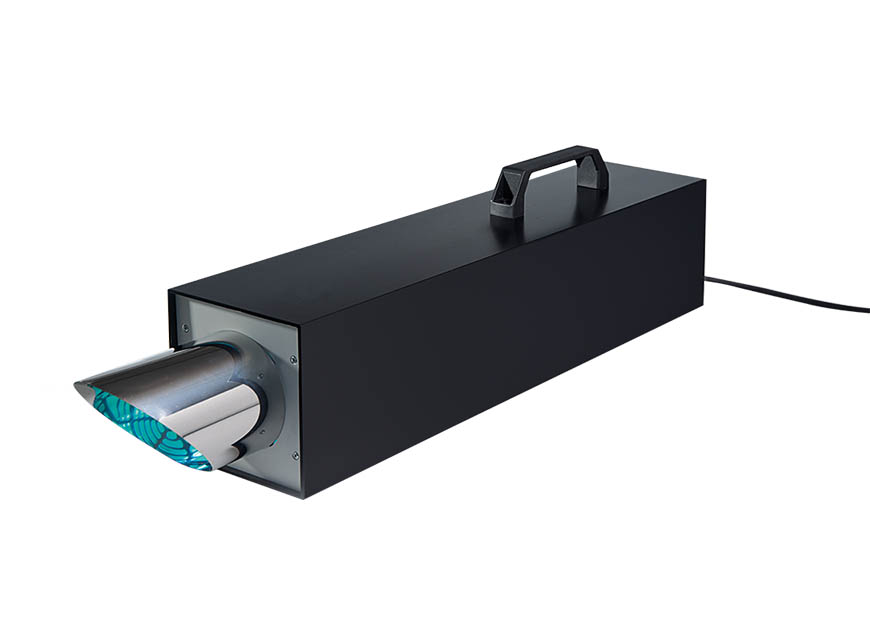
UV Recessed Spotlights
Contaminated surfaces in food production? High germ content in the air? Legionella infestation in the well? A bacterial film in the water tank? Mold spores in the cistern? A polluted ventilation system? Contaminated water in fish ponds? All of this has now found a solution with the UV recessed spotlights from DINIES. Because based on the germicidal effect of UV-C rays, these devices are ideal for disinfecting water and air.
Various accessories also ensure simplified integration into existing containers, pipes and ventilation systems.
